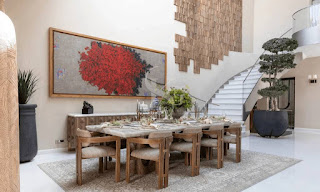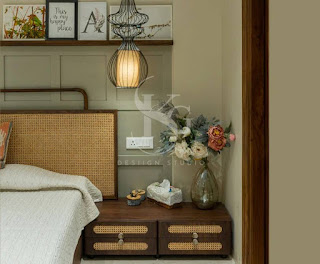How Can Technology Be Integrated into Interior Architecture to Create Smarter Environments?
In today’s rapidly evolving world, the integration of technology into Interior Architecture design is transforming how spaces function and feel. Designers and architects are now blending aesthetics with innovation to create intelligent environments that not only look impressive but also enhance the quality of life and work. This technological evolution is being spearheaded by pioneers such as the Best Office Interior Designers in Delhi, who are setting new standards in smart space planning.
Smart environments incorporate automation, intelligent systems, and responsive design to improve convenience, security, energy efficiency, and overall user experience. In the context of Interior Architecture design, this means embedding technology seamlessly into the layout and structure of a space. For example, smart lighting systems can automatically adjust brightness based on natural light availability or time of day. Motion sensors, integrated within wall panels, can control everything from room temperature to lighting, ensuring energy efficiency and user comfort.
Best
Office Interior Designers in Delhi are particularly adept at
leveraging technology to enhance productivity and collaboration. In modern
workspaces, smart conference rooms now feature voice-controlled systems,
wireless presentation tools, and occupancy sensors. These tools support
seamless communication, especially in hybrid work models. Such design
strategies are increasingly being adopted by Luxury
interior designers in Delhi, who apply similar technologies
to upscale residences, enhancing comfort, convenience, and luxury.
Voice assistants, smart thermostats, motorized
window treatments, and integrated entertainment systems are now standard in
luxury homes. These features are not only about ease but also about
personalizing the environment to suit the user’s preferences—a hallmark of
effective Interior Architecture design.
Integrating IoT (Internet of Things) devices into the design process ensures
that all these technologies work in harmony, providing a cohesive experience.
Another critical element is the use of
Building Information Modeling (BIM), a digital representation of physical and
functional characteristics of a space. BIM allows Interior Architecture design professionals to plan, visualize,
and simulate the impact of different design choices, including technology
integration. It also ensures that the technology infrastructure—like wiring,
sensor placement, and data hubs—are planned from the earliest stages of design.
Moreover, technology enables adaptive reuse and modular designs, which can evolve with changing needs. This is especially useful in commercial spaces where agility is a key requirement. The Best Office Interior Designers in Delhi frequently deploy modular partitions, mobile furniture, and plug-and-play solutions that support dynamic workflows.
At SKG
Design Studio, one of the leading Luxury interior designers in Delhi, technology is not an
afterthought but a core component of every project. From intelligent office
environments to high-end smart homes, SKG Design Studio ensures that every
detail aligns with the client’s lifestyle or business goals. Their deep
understanding of Interior Architecture
design, combined with technological foresight, allows them to create
spaces that are not just beautiful but smart, efficient, and future-ready.
In
conclusion, the integration of technology into Interior Architecture design is reshaping how we
interact with our spaces. By blending form with function and intelligence,
designers can deliver environments that are responsive, personalized, and
sustainable. This fusion of innovation and design is the future—and it's
already here.
.jpg)




Comments
Post a Comment